| |
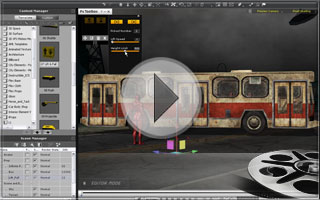 |
| Getting Started |
| |
If you're new to the Physics Toolbox, you can start off with this tutorial to get a brief introduction to what it's all about. Within this video you'll learn how to create a simple rolling ball project using physics, a basic example of a force prop in action, as well as how to combine two separate physics structures into a single interactive prop. Just some examples to get you started!
|
|
|
|
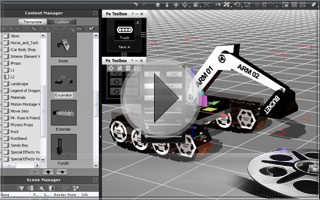 |
| User Interface |
| |
The UI in the Physics Toolbox plug-in might take a while to get used to, so we've provided this tutorial to help you become more familiar with the new layout. Here you'll learn about all the functions and features of the Physics Toolbox, such as how to merge control panels, move control tiles, how to tell exactly which physics control is assigned to which prop, and much more!
|
|
|
|
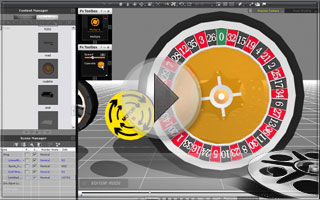 |
| L1 - Motors |
| |
Level 1 forces are the simplest components contained within the Physics Toolbox. The Plug-in includes 5 different forces which are the simplest components that you can use as part of machine construction or just to manipulate and control any on-screen prop by using physics. Motors are probably one of the most versatile types of physics force, and the Physics Toolbox includes 4 different types of motors each with their own unique control. Check out this tutorial for an introduction on what kind of situation is suitable for each motor type.
|
|
|
|
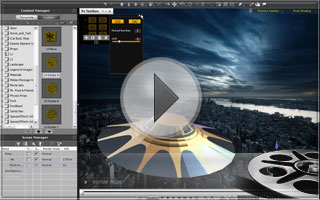 |
| L1 - Transform |
| |
The transform components are unique from the others as they don't actually operate under the laws of physics, and are rather included in this pack to provide yet another versatile tool to give you more options and power when animating your props. The transform group includes 3 different types of rotation as well as a movement force.
|
|
|
|
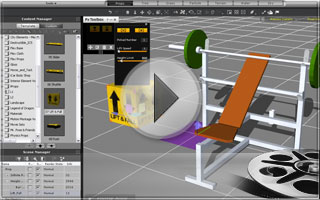 |
| L1 - Sliders |
| |
This tutorial will teach you about the Slider forces, which include lift-and-fall, slider, and shuttle. Each of these force components has unique controls and physics reactions to make your job of animating a lot easer.
|
|
|
|
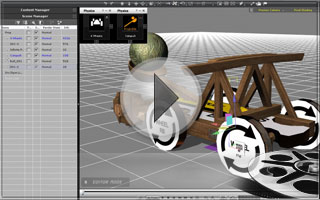 |
| L1 - Springs |
| |
This tutorial will teach you about the Spring forces, which includes catapults and ballistas. You'll find some practical examples of how these types of physics controls can be used in your project.
|
|
|
|
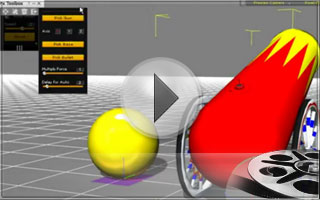 |
| L1 - Firepower |
| |
The firepower physics control can be used in a multitude of ways, however the first thing you'll probably want to do with this control is to attach it to some sort of mesh. Getting the firepower control to work exactly as you want it can be a little more difficult than meets the eye, so check out this tutorial for some great tips on how to align your bullet, choose a base for your gun mesh, and much more!
|
|
|
|
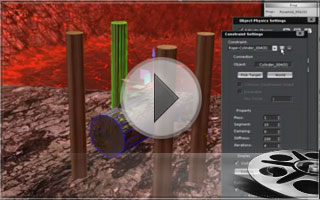 |
| L1 - Push |
| |
Like many of the other Force controls, the push can be used in many different ways. In this tutorial, you will learn about how the push control can affect an object suspended by rope constraints, as well as how to apply a auto-hovering mechanism to any prop you wish. Check out this tutorial to get some ideas for how you can use the push control in your next project.
|
|
|
|
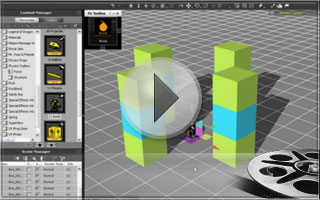 |
| L1 - Bomb |
| |
The bomb is probably one of the coolest additions to the Physics Toolbox. This versatile tool is useful for... well... blowing stuff up!
This tutorial will teach you all about the basic bomb parameters such as range, strength, and mass-selecting objects to blow sky high. Check out this tutorial, you're sure to have a blast!
|
|
|
|
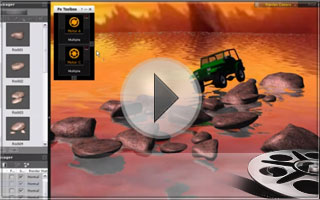 |
| 4WD Assembly |
| |
You might be wondering what the 4WD dummy prop included with the Physics pack is for. If that's the case, then this is the tutorial for you! This quick tutorial will walk you through the basics of how to assemble your model by attaching meshes to the 4WD dummy so you can play with a fully functional machine controllable via iClone physics controls. You'll also learn a little about terrain physics, so you can learn how to take your vehicle off-road on many of iClone's unique terrains.
|
|
|
|
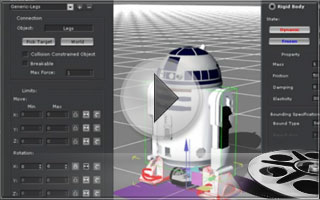 |
| Combining L2 & Constraints |
| |
Once you've gotten used to the basic Physics Toolbox structures, you'll probably want to go a little bit deeper and start combining them with different physics constraints to suit a variety of meshes. This tutorial will give you an explanation on how to apply constraints to force-driven structures to produce machines that will operate and react according to your specifications. Once you get the hang of combining physics structures with constraints, you'll be able to create nearly any structure your mind can imagine!
|
|
|
|
| |